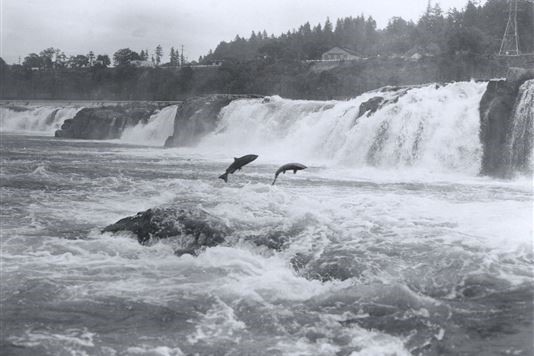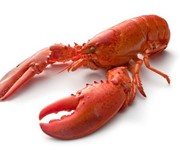Why we need to stop eating this type of salmon

Planning to enjoy fish tonight? Hold your (sea)horses and read this first.
The latest update to Fish Online, the guide to sustainable seafood from the Marine Conservation Society (MCS), has revealed continuing problems for wild-caught Atlantic salmon.
Worsening problems
The number of rivers in England and Wales which met MCS conservation targets in 2013 was just 30%, down from 53% in 2012.
And a lack of management of fish numbers in Scotland has resulted in overfishing of salmon in rivers where stocks were already low, prompting the MCS to move the species onto its red rated 'Fish to Avoid' list.
The Scottish Government is planning to consult on the introduction of measures to protect salmon, as it currently has set no conservation limits on fishing for salmon in its rivers. MCS Fisheries Officer Bernadette Clarke says that, right now, Scotland “has almost no management regime in place to prevent an increase in coastal netting, neither has it adequate mechanisms to limit catches”.
Caution on cod
In other updates, cod from the East and West Baltic are now placed under a ‘cautionary’ rating, while North Sea cod should be avoided, as should small whiting.
Herring from the Western Baltic should only be eaten sparingly, though stocks are up slightly.
The online guide
 At Fish Online, you can type in the name of a fish to search the MCS’s database and get information on whether or not stocks of that species are sustainable.
At Fish Online, you can type in the name of a fish to search the MCS’s database and get information on whether or not stocks of that species are sustainable.
Fish are given a rating from 1 to 5, with 1 given to sustainable seafood, and 5 showing that a particular fish should not be eaten. The ‘Fish to Eat’ list comprises those in the 1 and 2 bracket, while the ‘Fish to Avoid’ are rated 5.
A fish can appear under several numbers if it is sourced sustainably in one place, but less sustainably in another. The MCS guide gives detailed information about the differences, and says which source of fish is preferable.
Crustaceans and squid
 The MCS’s Guide now includes additional information on lobster and crab, plus new entries for cuttlefish and squid.
The MCS’s Guide now includes additional information on lobster and crab, plus new entries for cuttlefish and squid.
It’s better to buy lobster from fisheries who put measures in place to protect egg bearing females as, strangely, current legislation prohibits the landing of egg bearing crabs, but not lobsters.
Lobster from the South West and Cornwall, and crab from the western channel and the Celtic Sea are the most sustainable choices.
Squid is rated between 3 and 4, which means that it shouldn’t be eaten often. Cuttlefish is also rated 3, but many areas and catching methods for both are under assessment.
What’s the quickest way to check?
The list here is far from exhaustive; luckily, the MCS has created a 'Good Fish Guide', which provides a quick reference system that can be downloaded for free, to help you make sustainable choices when selecting seafood.
There’s also an app so you can check what’s fine to eat on the go.
Do you think that the UK needs tighter legislation to prevent unsustainable seafood entering our markets? Are you surprised to find that Scotland doesn’t already have controls in place to protect its salmon? Let us know in the Comments below.
You might also like:
Sainsbury's and M&S top for sustainable seafood
Comments
Be the first to comment
Do you want to comment on this article? You need to be signed in for this feature